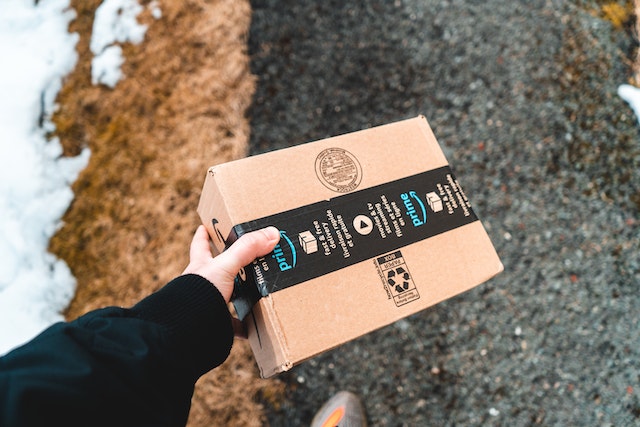On July 11-12, the annual Prime Day will start again. Last year's Member Day, under the multiple pressures of the epidemic, inflation and other factors, Amazon still achieved a sales volume of 3 billion US dollars and a total of more than 300 million items purchased by its members. This year's Membership Day, whether it is Amazon or sellers, is worth looking forward to.
However, each big promotion is a test for sellers, a comprehensive test for supply chain, logistics, listing quality, promotion strategy, and store operations.
Among them, there are many pitfalls that sellers are easy to step on:
Failure to report membership day activities in time or missing the submission time
Low-price promotion before the membership day, resulting in too low recommended price for the event
Various preferential discounts superimposed, zero yuan purchase
There is no stocking plan in advance, and there is no stock at the time of the event
The link of the member has been complained or changed into a dog in violation of the regulations
Links that sold well on the eve of Member Day were hijacked
Currency prices set incorrectly between different sites (ignoring exchange rates)
In order to avoid misoperations, Amazon sellers must check various operating strategies before the start of the big promotion. One of the things that needs to be checked most is the discount superposition setting. Due to the wrong discount superposition setting, it often happens in the peak season that it leads to zero yuan purchases and losses of millions.
Today, Xiao G is here to talk to you about how the discount superposition occurs, under what circumstances it will superimpose, and what methods or systems can be used to avoid this mistake.
1. The situation of overlapping discounts
On Amazon, the common discounts are as follows: coupons (Coupons), Promotions, LD (second kill), member-only discounts, outlets, etc.
Among them, Promotions include social media promotion codes/purchase discounts/buy one get one free, buyers need to meet the specified conditions or enter the discount code at checkout to enjoy the discount.
There are three types of purchase discounts:
1. One-time: Code that can only be used once
The code will become invalid immediately after the buyer uses it, but it should be noted that there is no limit to how many such one-time codes each customer can use. If you want to limit each customer to use only one such code, then also check the "Each buyer can only use one discount code" option.
2. Unlimited: Discount codes that sellers can reuse
Both of these are priority discount codes. In the same order, buyers can only use one priority discount code at most. If the buyer has multiple preferential discount codes, Amazon will automatically help the buyer choose the one with the largest discount.
3. None: No discount code
Buyers can enjoy discounts without entering a discount code, and there is no quantity limit. It can be superimposed with all discounts and belongs to unlimited promotion codes (different concept from point 2). Due to various risk considerations, it is not recommended to use this discount, because once the setting is wrong, your inventory will be emptied at an unexpected speed.
So how these discounts are superimposed, the following small G will sort out for everyone.
Mainly divided into two categories:
1) Discount stacking without discount code
2) Superposition of discount code is required
1) Discount stacking that does not require a discount code: refers to the stacking of promotions on the site, such as the mutual stacking of coupons and flash sales, member discounts, outlets and other discounts.
Example: The seller sets a 20% off coupon and a 20% off flash sale for a product priced at USD 100. The final price of the product is: 100*(1-20%-20%)=60 (USD)
When there is a membership discount, the calculation is slightly different:
The seller sets a 20% off membership discount and a 20% off coupon for a product priced at $100. The final selling price of the product is: 100*(1-20%)*(1-20%)=64 (USD)
2) The stacking of discount codes is required. First of all, sellers need to know that codes can also be divided into priority discount codes and unlimited promotional discount codes, and sellers can create multiple discount codes.
Here are several situations:
① If the seller only created one discount code
Regardless of whether the seller has set the priority type or unlimited type, these two discount codes can be superimposed with the promotions on the site, so sellers need to pay special attention to the promotions on the site when setting
② If the seller has created multiple priority discount codes
In this case, even if the buyer has received multiple discount codes, he will only choose the highest discount code when placing an order. For example, if he sets a 50% and 40% discount code, he will only choose 50% of the discount code in the end, but the same, Still have to pay attention that it will overlap with the promotions on the site.
③ If the seller has created multiple unlimited discount codes
Unlimited discount codes can be stacked. For example, if you set 20% and 30% discount codes, the buyer will get a 50% discount in the end.
④ If the seller has created multiple priority discount codes and multiple unlimited discount codes
For example, the seller has set a 20% and a 30% priority discount code and a 20% and a 30% unlimited discount code.
The final discount that the buyer enjoys is the highest special discount + two superimposed unlimited discounts, that is, 30% + 20% + 30% = 80% discount.
Therefore, the seller must have a concept in mind:
Promotional activities that require discount codes and promotional activities that do not require promotional codes will be superimposed, and promotional activities with discount codes will also be superimposed with other promotional activities with discount codes under corresponding circumstances.
In fact, the simplest can be summed up in the following aspects:
1. Coupon and social media discount codes are unlimited discounts, which will be superimposed with any discount;
2. Seckill is a price status, and it will be superimposed with other discounts;
3. If there are multiple priority codes, buyers can only enjoy the highest discount, while unlimited codes will be superimposed;
4. If member-only discounts and flash deals exist at the same time, the exclusive discounts will be automatically turned off, and will be reactivated 1 hour after the flash sale ends. However, sellers need to pay attention to the member-only discount will affect the highest promotion price of Lightning Deal.
In addition, when each in-site coupon is used by consumers, Amazon will charge the seller an additional $0.6. Therefore, for products with a low unit price, when calculating the price and profit, you must take into account the discounted price and then subtract $0.6. preferential cost.
Amazon Discount Overlay Instructions Sheet
2. How can sellers avoid the risk of superimposed discounts?
1. It is recommended to create a relevant document and register the products, promotion time, price, quantity and other data of the promotional activities that the store participated in (the data can also be used as a reference for the seckill data). After registering, check it again. When there are many products participating in the promotion that week, check it before leaving get off work to see which products are participating in the event, and check whether the relevant coupons and codes have been cancelled.
2. Prepare a spare buyer number to test the final purchase price of the product.
3. You can take a post-it note and paste the discount time in a conspicuous place on the screen to remind yourself, or set a reminder on the desktop of your mobile phone.
4. Bosses and supervisors should emphasize the seriousness of the problem of superimposed discounts, emphasizing that the operation is unforgettable, improve the management system, supervision process, and mechanism, and conduct system approval for all links that may cause mistakes in operation, and Set up multiple approval personnel for major events to avoid operational errors.
5. Use discount monitoring tools to automatically calculate discounts. Accumulated ERP discount monitoring function can help sellers to automatically calculate the superimposed discounted price, and give early warnings to ASINs with abnormal discounts.
The discount monitoring function of ERP will display the minimum possible discount and the discount price of all MSKUs that have reported activities in the future (as shown in the figure below). You can also set the discount monitoring ratio according to the actual situation, and filter future discounts lower than the custom discount with one click. of all products.
Click on the promotion details page of the product with too low discount to view the discount and final discount price of each activity (as shown in the figure below). At the same time, if there is a discount superposition, the superimposed discount price and discount ratio will be displayed on the discount superimposed card .
In short, you must not be sloppy in the discount setting process, and check it carefully before the event takes effect to avoid setting errors. Finally, I wish all sellers a surge in sales and profits during Prime Day~
















